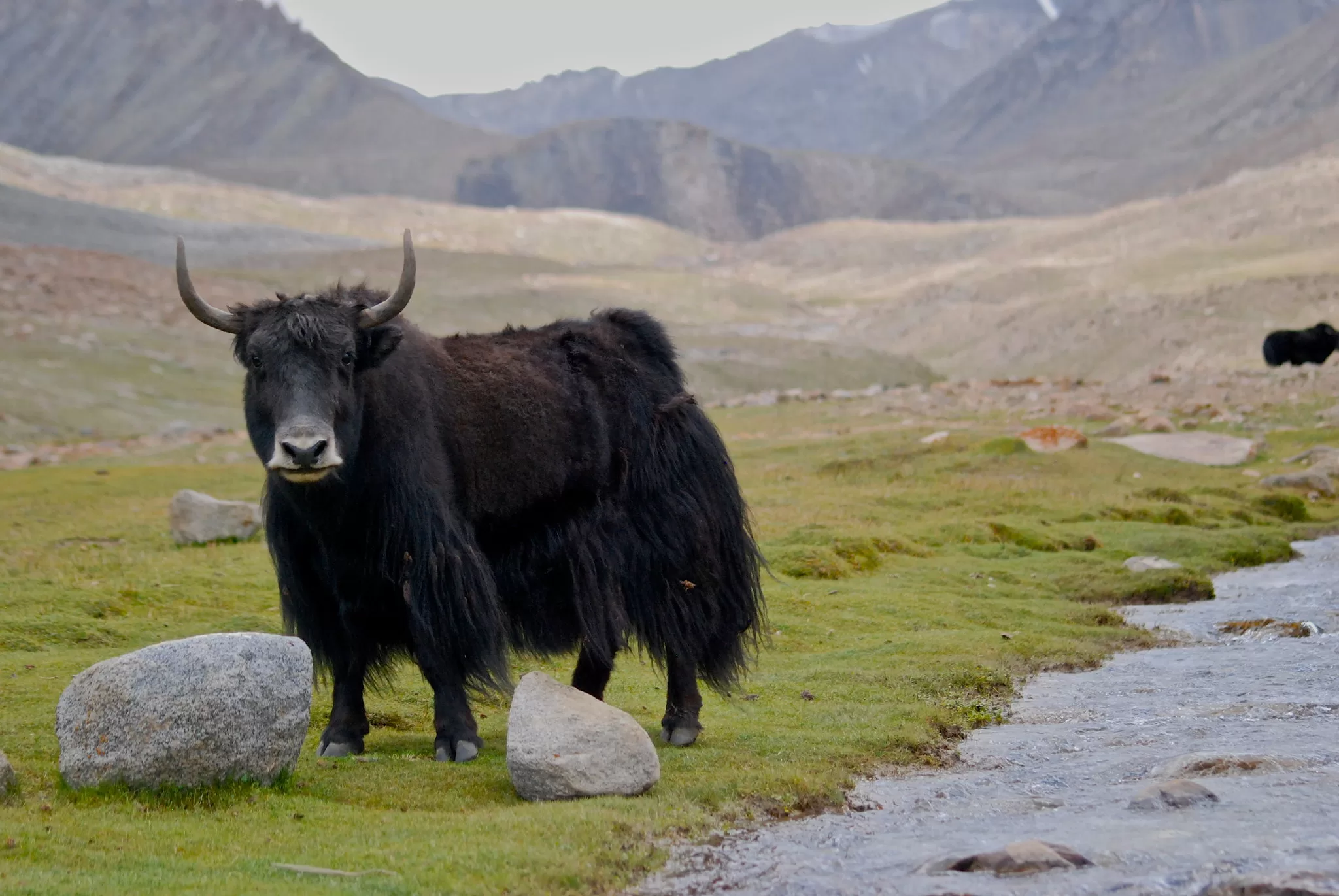What type of animal do you need to make a living in the Himalayas?
A yak of all trades.
Admittedly, I am not exactly proud of that opening, but at least there’s some truth to it. While the western world is milking large herds of Holsteins with rotary parlors or milking robots, dairy farming looks different in the Himalaya Mountains that stretch across the Asian continent. You can forget about milkers, listening to the radio in the barn, and even having barns to milk in. In fact, what you’re milking is technically not even a cow.
Still today, much of the current agriculture across the Himalayas revolves around small herds of yaks that are used for milk and plowing. In places like Tibet, Nepal and Mongolia, the relationships between humans and yaks is thousands of years old, and management practices range from nomadic herds to more advanced husbandry methods similar to Western agriculture. Nonetheless, particularly in the mountain regions, yak farming tends to engage more rudimentary methods.
In the summer months a small herd of ten to 20 yaks may be grazed in the mountains and watched over by shepherds living in tents near the animals. Twice a day the yaks are tethered to the same long rope and milked. In colder months the herd would be brought to pasture at lower elevation, sometimes in mud pens near the permanent abodes of the farmers. Yak milk is higher in all solids, with up to 9% fat and almost 6% protein. However, the average yak only gives on average 80 gallons of milk the first six months after calving.
The easiest way to describe what a yak looks like is to call it a sickly-looking buffalo, but that probably wouldn’t be fair to an animal as durable as this one. In addition to drawing plows, they are used to transport goods over mountain passes. They are small, compact, and have a long dense wooly coat. The domestic yak doesn’t moo, but instead grunts much like a white tail buck in rut. And here’s another interesting yak fact: their feces don’t smell. Both their wool and defecation have no discernable odor. Hence, they don’t have to worry about bringing any smells with them back to the tents.
The yak is built for the rough terrains they inhabit. As its appearance suggests, the yak is more closely related to the buffalo than the bovine, and may even be the animal that the American bison descended from. Their rumens are much larger than a cow’s, allowing them to extract more nutrients from the low-quality fodder they must consume and allowing them to only need to eat 1% of their body weight, as composed to 3% for a bovine. There is one caveat, though, that handlers must be aware of when taking them on trekking journeys: they don’t eat grain. You can’t bring feed for the yaks on the journey, meaning that they would starve attempting to cross large barren stretches.
Because of its high fat content, yak milk is often given to children and the elderly to provide nutritional sustenance, while the rest of it is made into butter, ghee (a form of clarified butter), yoghurt and powder. “Butter tea” is popular among herdsmen, in which a chunk of yak milk butter is added to water that has been boiled with tea leaves. The milk collected from a yak herd is often processed by the shepherds in their tents, traditionally using a pouch made from the skin of a yak to churn the milk and separate out the whey.
As important as the yak is to local life in the Himalayas, it’s not always all-work-and-no-play with them. Yak racing is one of the main events in traditional festivals in Kazakhstan, Kyrgyzstan, Tibet, and Mongolia. Both the yak and the rider are adorned in colorful attire and cheered by the crowd as they amble towards the finish line. In other countries, the yak has been integrated into the tourism industry. This includes playing polo with yaks instead of horses, as well as yak skiing. In the latter, skiers are connected to a yak by a pully. As the animal goes down the hill the person skis up it. (I told you the opening joke made sense.)
With the involvement in agriculture that most of us are familiar with, going through its daily and seasonal repetitions, it’s easy to forget just how diverse the farming experience can be. In fact, in some parts far away, it is radically different. In areas like the Himalayas, landscape and history converge in ways to create an entirely unique tradition behind working with animals and feeding the community. Learning about these different cultures always leaves something to admire.
Just thinking out loud here…Guernsey surfing?
This article is part of The Milk House Column series, published in print across three countries and two languages. It can also be found at themilkhouse.org.
This article appeared in a similar form in Progressive Dairyman.
Ryan Dennis is the author of the novel The Beasts They Turned Away.
(Photo: Alberto Bertotto/flickr.com/ CC BY-SA 2.0)

